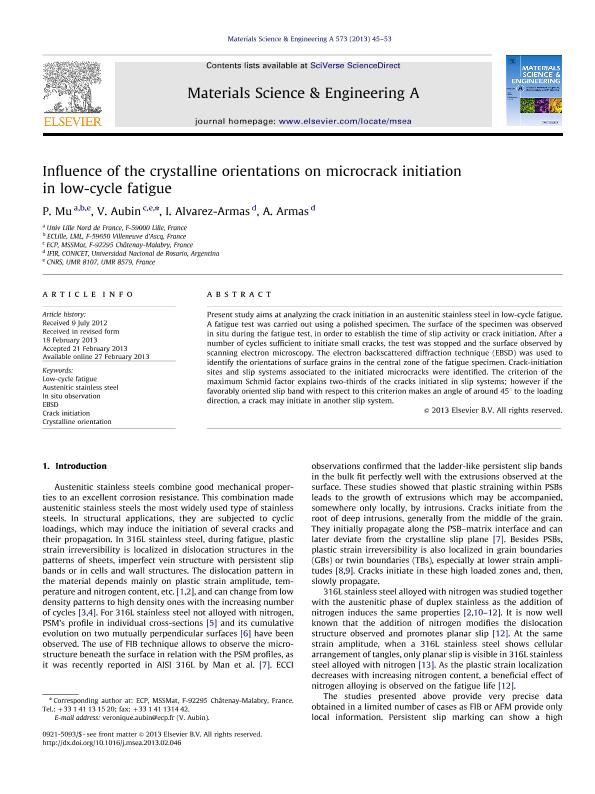Artículo
Influence of the crystalline orientations on microcrack initiation in low-cycle fatigue
Fecha de publicación:
02/2013
Editorial:
Elsevier
Revista:
Materials Science and Engineering A: Structural Materials: Properties, Microstructure and Processing
ISSN:
0921-5093
Idioma:
Inglés
Tipo de recurso:
Artículo publicado
Clasificación temática:
Resumen
The present study aims at analyzing the crack initiation in an austenitic stainless steel in low-cycle fatigue. A fatigue test was carried out using a polished specimen. The surface of the specimen was observed in situ during the fatigue test, in order to establish the time of slip activity or crack initiation. After a number of cycles sufficient to initiate small cracks, the test was stopped and the surface observed by Scanning Electron Microscopy. The electron backscattered diffraction technique (EBSD) was used to identify the orientations of surface grains in the central zone of the fatigue specimen. Crack-initiation sites and slip systems associated to the initiated microcracks were identified. The criterion of the maximum Schmid Factor explains two thirds of the cracks initiated in slip systems, however if the favourably oriented slip band with respect to this criterion makes an angle of around 45° to the loading direction, a crack may initiate in another slip system
Archivos asociados
Licencia
Identificadores
Colecciones
Articulos(IFIR)
Articulos de INST.DE FISICA DE ROSARIO (I)
Articulos de INST.DE FISICA DE ROSARIO (I)
Citación
Mu, P.; Aubin, V.; Alvarez, Iris; Armas, Alberto Franklin; Influence of the crystalline orientations on microcrack initiation in low-cycle fatigue; Elsevier; Materials Science and Engineering A: Structural Materials: Properties, Microstructure and Processing; 573; 2-2013; 45-53
Compartir
Altmétricas




